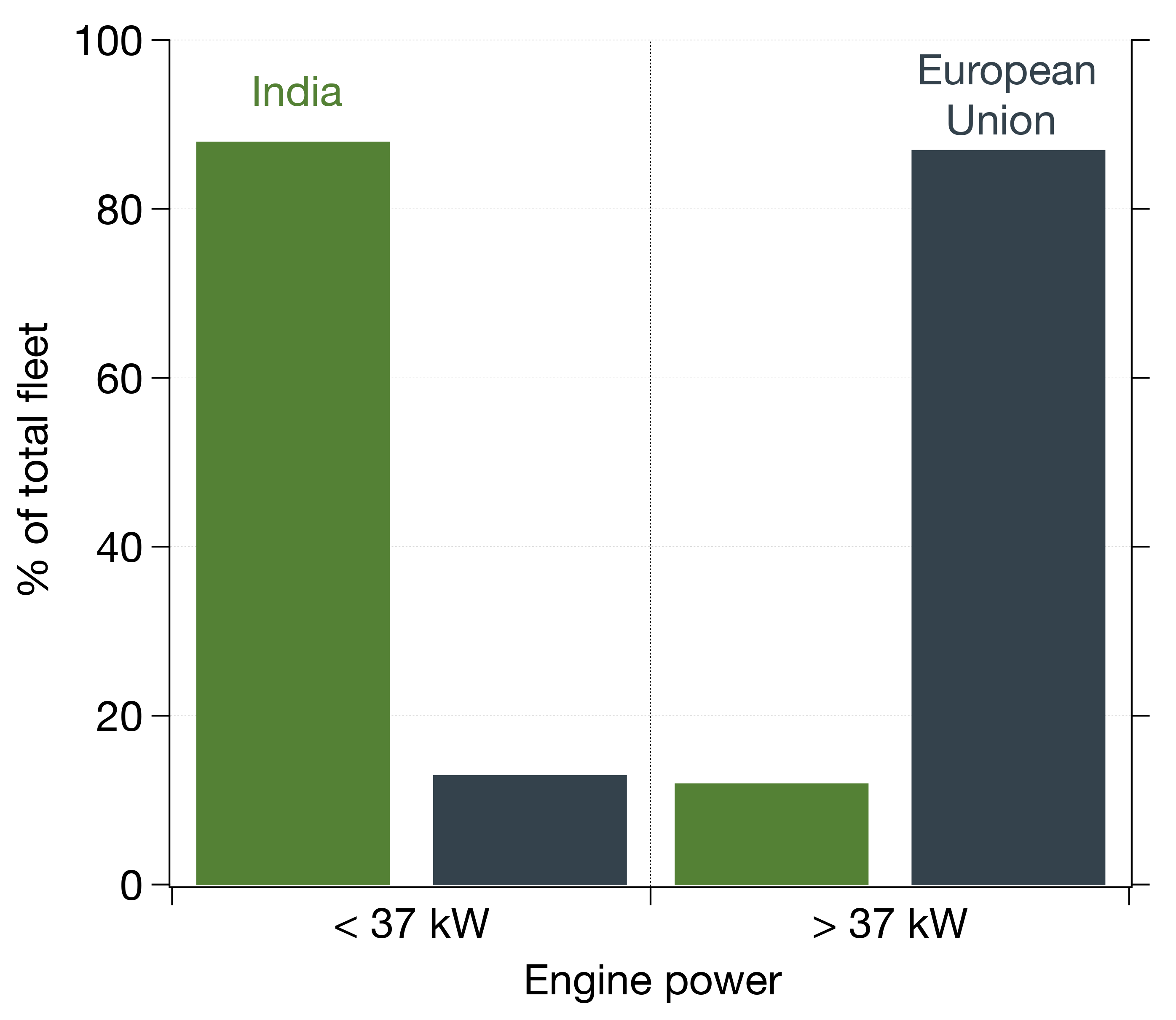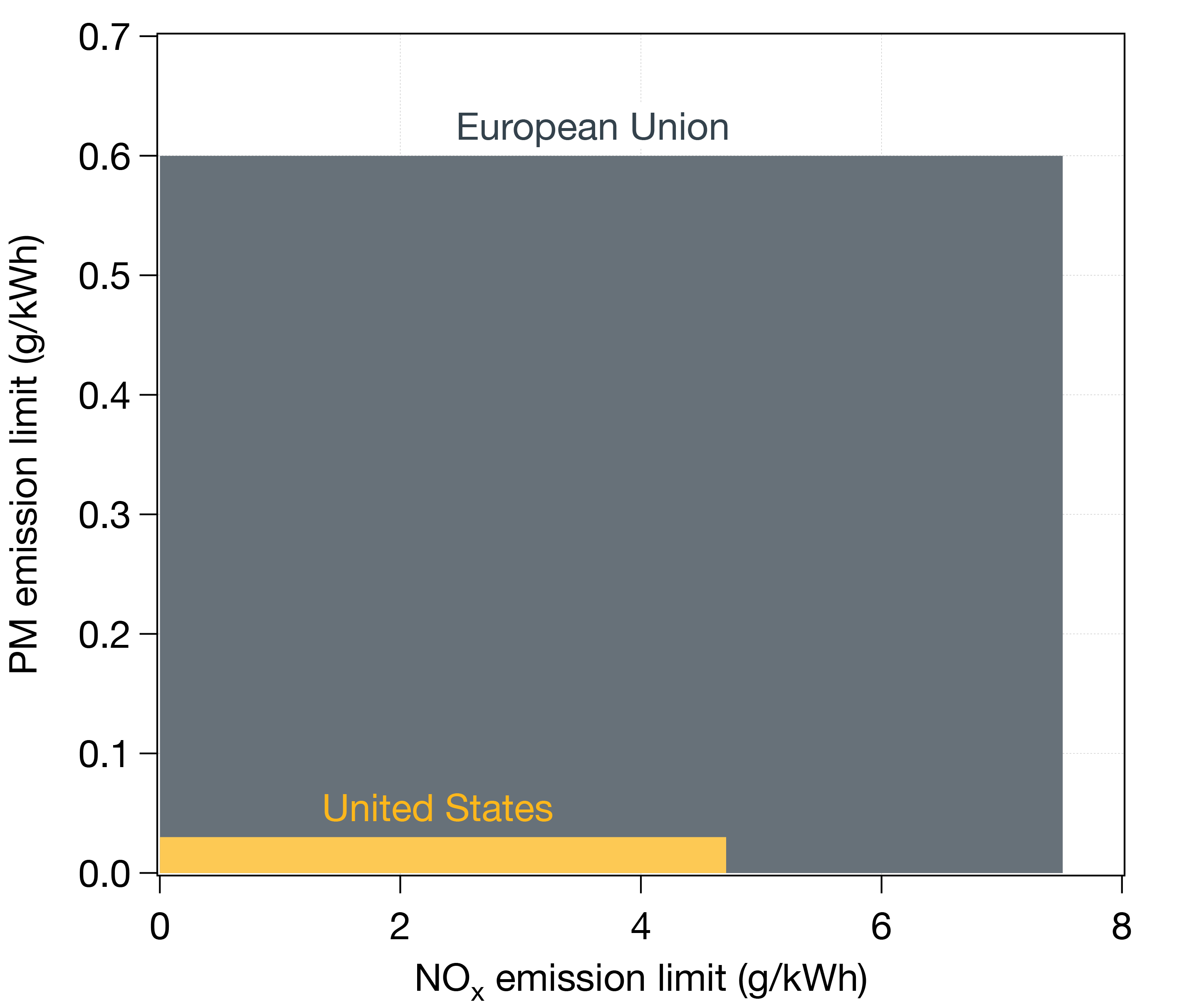Evaluation of emission-control scenarios for agricultural tractors and construction equipment
Blog
A sneak preview of future stages of Indian emission standards for non-road engines reveals a tractor-sized loophole
In January, the Automotive Research Association of India (ARAI) published a booklet summarizing Indian emissions regulations for transportation sources. It is a particularly valuable resource for anyone interested in learning more about the recently adopted BS VI standards for on–road vehicles. While paging through it, I was surprised to see ARAI included a section on upcoming standards for non-road engines. These standards have not been officially proposed yet, so the booklet provides a sneak preview of what Indian regulators are planning for non-road sources like agricultural tractors and construction equipment.
Non-road vehicles and equipment oftentimes take a backseat to on-road vehicles in discussions of the air-quality and human health impacts of emissions from transportation sources. But these non-road sources contribute significantly to air pollution, particularly in regions where stringent standards are in place for on-road vehicles. For example, particulate matter (PM) emissions from non-road equipment in California are about the same as those from passenger vehicles.
We recently looked into what the emissions impact of non-road sources will be in India now that new BS VI emission standards have been finalized for on-road vehicles. By our estimates, if nothing is done to prevent it annual emissions of PM and nitrogen oxides (NOX) from agricultural tractors and construction equipment will surpass those from on-road vehicles by 2030.
The ARAI booklet suggests that something will be done, which is good news for air quality in India. Specifically, it indicates that emission standards for these sources will be tightened in two stages: BS IV standards in 2021 and BS V standards in 2025. These standards are based on European Union Stage IV standards, which are currently in force, and Stage V standards which were adopted in 2016 and will be implemented beginning in 2018.
The clear highlight of this plan is that it would establish a roadmap to achieve world-class EU Stage V-equivalent emission standards. Stage V standards include a number of provisions that will compel the use of diesel particulate filters, which nearly eliminate PM emissions, in non-road engine designs. If the regulatory framework outlined in the ARAI booklet is adopted, India would be the first non-EU country to have Stage V level standards on the books, bypassing countries like the United States and Japan.
Unfortunately, as currently constituted this plan also has a giant loophole whereby the vast majority of agricultural tractors sold in India would be effectively exempt from BS IV emission standards and would not be required to reduce emissions of harmful pollutants for another 8 years.
To understand why this is the case requires a bit of a primer on how emissions from non-road vehicles and equipment are regulated. Emission limits are set for the engines that are installed in such equipment. Engines are regulated by their size, and emission limits are defined for distinct power classes. For example, engines between 19 and 37 kW are regulated differently than engines between 130 and 560 kW.
As I mentioned above, the BS IV standards outlined in the ARAI booklet are based on EU Stage IV standards for non-road engines. When the EU developed Stage IV standards, no new emission limits were set for engines between 19 and 37 kW. These engines continued to be subject to the less stringent emission requirements of a previous regulatory stage. From an emissions perspective, this wasn’t that big of a deal. As shown in the chart below, the vast majority agricultural tractors sold in Europe have engines larger than 37 kW. New Stage IV limits were set for these larger engines, promoting better control of PM and NOX emissions.
The case in India is very different. In fact, it’s the mirror image of the European market. About 90% of Indian agricultural tractors are powered by engines smaller than 37 kW. This means nearly all new tractors sold in the country would not be subject to BS IV standards, and there would be no change in current emissions requirements until 2025. This loophole will have a substantial impact on air pollutant emissions from the agricultural sector and will delay the introduction of efficient, cost-effective pollution control technologies.
So, what can be done to reduce emissions from Indian tractors before BS V standards come online in 2025? There is a straightforward solution. At about the same time that Europe introduced Stage IV standards, the United States implemented Tier 4f standards for non-road engines. The two standards are, by design, largely similar. The same emission limits and certification procedures apply to engines between 37 and 560 kW. However, in contrast to the EU the U.S. did set more stringent standards for smaller engines. The chart below shows a comparison of PM and NOX limits for 19–37 kW engines in the two regulatory programs. The key difference is that the U.S. adopted a PM emission limit 20 times more stringent than the EU for engines in this size range.
The tractor loophole could be closed by simply supplementing planned BS IV standards with U.S. Tier 4f level standards for engines smaller than 37 kW. No changes would be needed for other engine sizes. This change would greatly accelerate emissions reductions from the agricultural sector — we estimate this regulatory pathway would mitigate about 300 and 3,000 kilotons of PM and NOX emissions, respectively, between 2020 and 2040. And it is technically feasible: engine manufacturers are currently producing engines that meet these standards for the U.S. market, and the largest tractor manufacturer in India, Mahindra, has shown that it can produce cost-effective tractor engines capable of meeting Tier 4f emission standards.
In short, it’s welcome news that Indian regulators have set their sights on catching up with best-practice emissions standards for non-road engines. Here’s hoping that in aiming for that goal in 2025 they don’t overlook a simple fix that will bring even more immediate help in solving the persistent air pollution problems facing the country.


